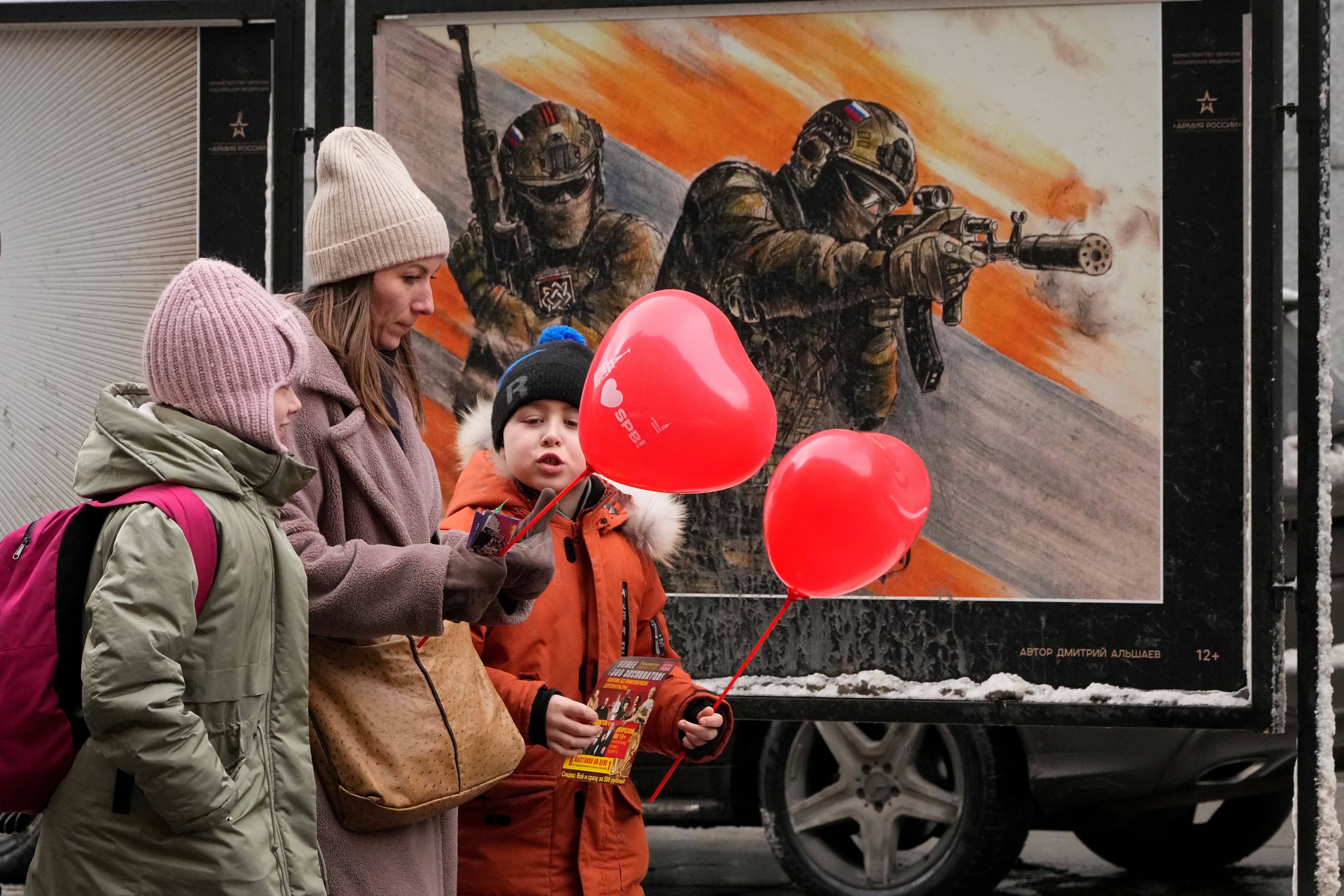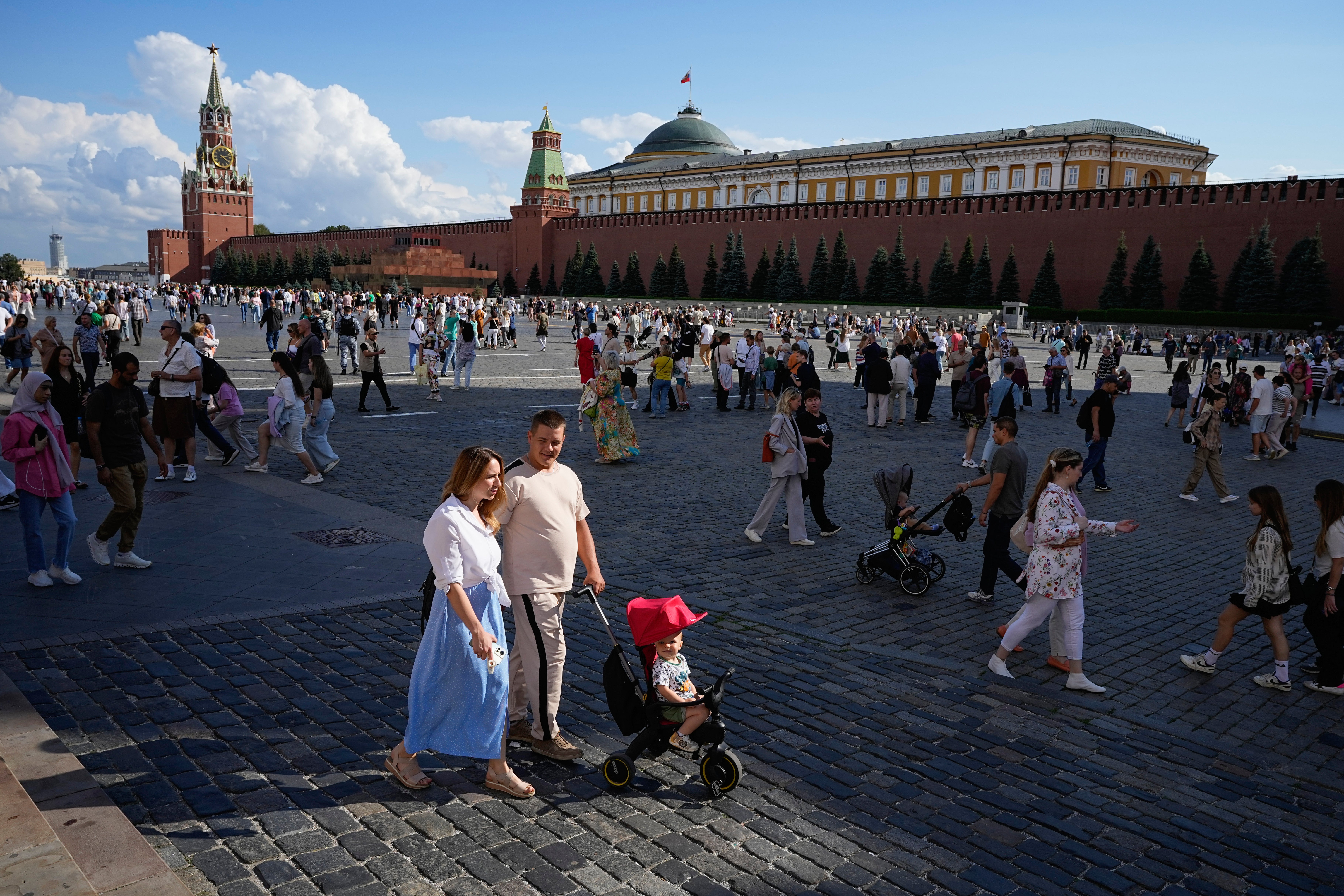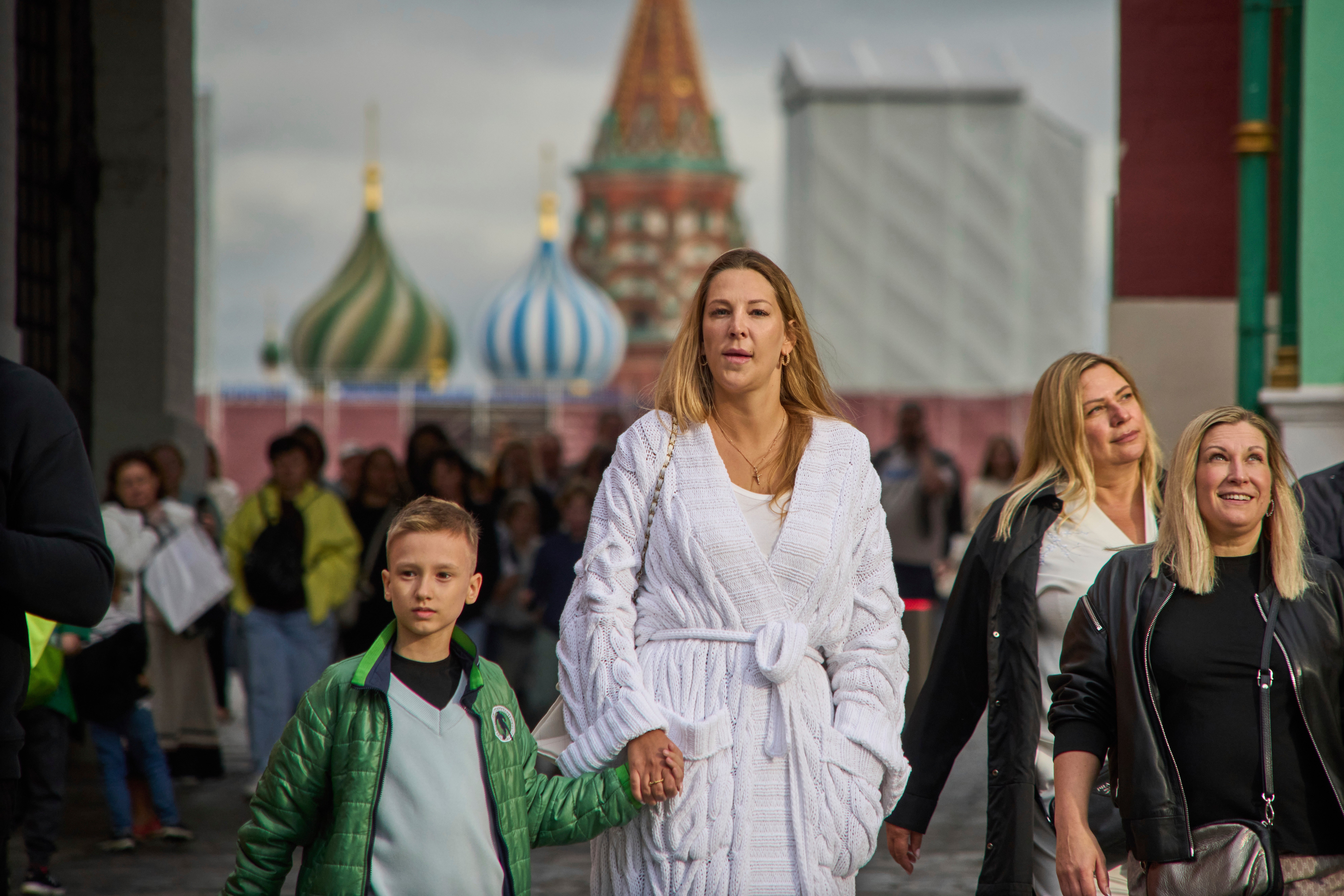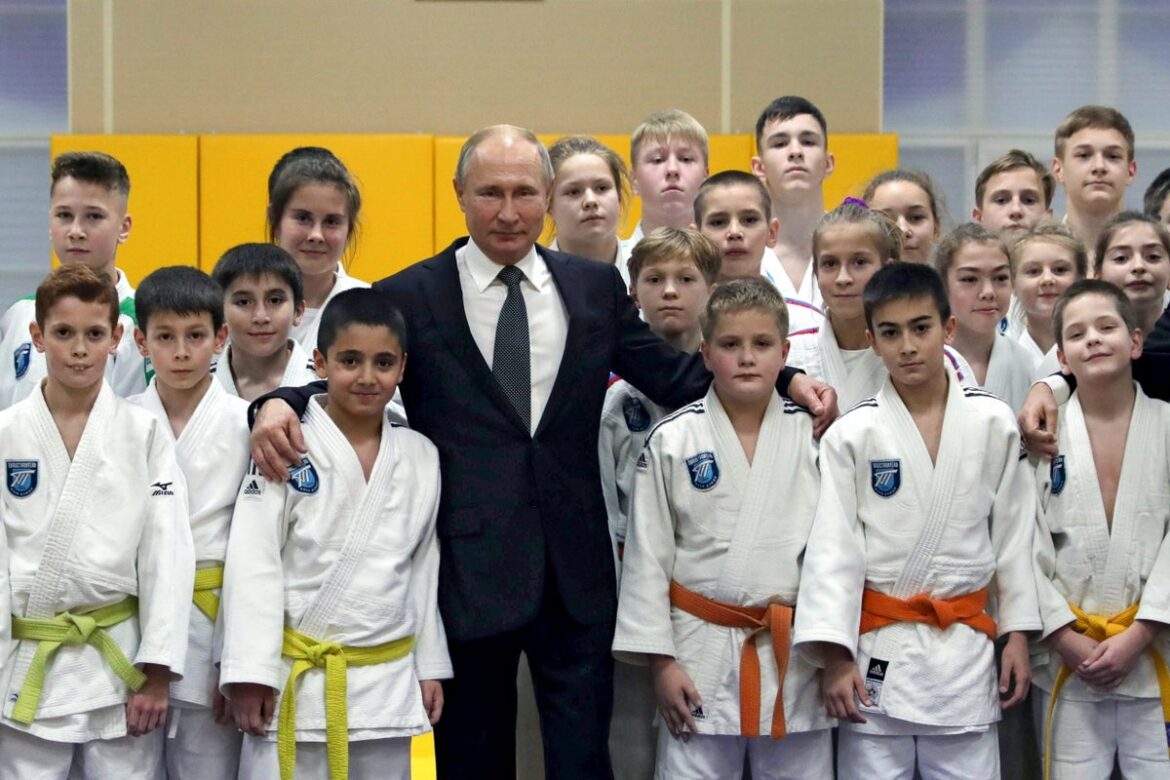For a quarter of a century, Russian president Vladimir Putin has grappled with his country’s declining and ageing population. The demographic crisis pre-dates his ascent to power, with the nation recording its lowest birth rate in 1999, the year before he officially became president.
In 2005, Putin acknowledged the issue, stating that it was necessary to maintain “social and economic stability” in order to address the challenge of a falling population. He reiterated his concerns in 2019, admitting that Russia was still “haunted” by the problem.
Most recently, on Thursday (23 October), he addressed a demographic conference at the Kremlin, where he emphasised that increasing the birth rate was “crucial” for Russia’s future.
To combat this trend, Putin has introduced various initiatives, ranging from providing free school meals for large families to reinstating Soviet-era “hero mother” medals for women who bear 10 or more children.
“Many of our grandmothers and great-grandmothers had seven, eight, and even more children,” Putin said in 2023. “Let’s preserve and revive these wonderful traditions. Having many children and a large family must become the norm.”
At the beginning of this century, the birth rate in Russia grew with its economic prosperity, from 1.21 million babies born in 1999 to 1.94 million in 2015.
But those hard-won gains are crumbling against a backdrop of financial uncertainty, the war in Ukraine, an exodus of young men, and opposition to immigration.
Russia’s population has fallen from 147.6 million in 1990 – the year before the Soviet Union collapsed – to 146.1 million this year, according to Russia’s federal statistics service. Since the illegal annexation of Crimea in 2014, the data has included the peninsula’s population of around 2 million, as well as births and deaths there.
The population is also significantly older. In 1990, 21.1 per cent were aged 55 or older, government data said. In 2024, that figure was 30 per cent.
Since the peak in 2015, the number of births has fallen annually, and deaths are now outpacing births. There were only 1.22 million live births last year – only marginally above the 1999 low. Demographer Alexei Raksha reported that the number of babies born in Russia in February 2025 was the lowest monthly figure in more than two centuries.
Russia is trying new restrictions to halt the backslide and embrace what it calls “traditional family values”, with laws banning the promotion of abortion and “child-free ideology”, and outlawing all LGBT+ activism.
Officials believe that these values could act as a “magic wand” for solving the country’s demographic problems, said Russian feminist scholar Sasha Talaver.
In the government’s view, she says, women might be financially independent, but they should be “willing and very excited to take up this additional work of reproduction in the name of patriotism and Russian strength”.

In much of the West, shrinking birth rates are usually linked with economic turbulence. Young couples living in cramped apartments, unable to buy their own homes, or fearing for their jobs, are naturally less confident that they can afford to raise a child.
But Russia is saddled with a harsh demographic history. Around 27 million Soviet citizens died in the Second World War, diminishing the male population dramatically. Then, as the country was beginning to recover, the Soviet Union collapsed, and the birth rate tumbled again.
The number of Russian women in their twenties and early thirties is small, saysJenny Mathers of the University of Aberystwyth in Wales. This means the authorities are “desperate to get as many babies as possible out of this much smaller number of women”.
Although Russia has not revealed how many of its men have been killed in Ukraine, Western estimates have put the number of dead in the hundreds of thousands. When the war began, many young Russians moved abroad – some for ideological reasons, to escape a crackdown on dissent, or to avoid military service.
“You’ve got a much-diminished pool of potential fathers in a diminished pool of potential mothers,” says Mathers, explaining that this is a particular problem for Putin, who has long linked population and national security.
Some family-friendly initiatives are popular, like the distribution of cash certificates for parents, which can go towards pensions, education, or a subsidised mortgage.
Others are controversial, such as the one-time payments of around $1,200 (£900) offered to pregnant teenagers in some regions. Officials say these are intended to support vulnerable mothers, but critics say they encourage teenage pregnancy.
Other programmes seem to be mostly symbolic. Since 2022, Russia has created new state holidays, such as Family, Love and Fidelity Day in July, and Pregnant Women’s Day, celebrated twice yearly on 7 April and 7 October.
Last year, Russia’s fertility rate – the average number of children born per woman – was 1.4, state media reported. That’s well below the 2.1 replacement rate for the population, and slightly lower than the US figure of 1.6, released by the US Centers for Disease Control and Prevention.

Some regions have laws that make it illegal to “encourage abortions”, while national legislation introduced in 2024 banned the promotion of “child-free propaganda”. The wording in such initiatives is often vague, leaving them open to interpretation, but the change was enough to prompt the producers of a reality TV show titled “16 and Pregnant” to change the show’s name to “Mommy at 16”.
For many women, the measures have made already sensitive conversations even more fraught. A 29-year-old woman who has decided not to have children told reporters that she sees a gynecologist at a private Moscow clinic, rather than a state one, to avoid intrusive questions.
“Whether I plan to have children, whether I don’t plan to have children – I don’t get asked about that at all,” she said, speaking on condition of anonymity for fear of repercussions. She added that it’s “a completely different story” at state-run clinics.
An increasing number of laws limit access to abortion. While the procedure remains legal and widely available, some private clinics no longer offer abortion services. New legislation has also curbed the sale of abortion-inducing pills, and also affects access to emergency contraceptives.
Women are encouraged to go to state clinics, where waits are longer, while some of these facilities refuse to perform abortions on certain days. By the time patients have completed compulsory counselling and a mandatory waiting period of between 48 hours and a week, they risk exceeding the legal timeframe for an abortion.
The number of abortions has fallen steadily under these laws, although experts say it was already decreasing. Still, there hasn’t been a corresponding increase in births, and activists believe that restricting abortion will only harm the health of women and children.
“The only thing you will get from this is illegal abortions. That means more deaths: more children’s deaths and more women’s deaths,” says Russian journalist and feminist activist Zalina Marshenkulova.
She sees the new government limits as simply repression for repression’s sake. “They exist just to ban, to block any voice of freedom,” she claims.

Russia could increase its population by allowing higher immigration – a policy the Kremlin is unlikely to adopt.
Russian officials have recently fomented anti-migrant sentiment, tracking their movements, clamping down on their employment, and impeding their children’s right to education. Central Asians who have traditionally travelled to Russia for work are looking elsewhere, hoping to avoid the growing discrimination and economic uncertainty.
While the war in Ukraine continues, Moscow can promise financial rewards for would-be parents, but not the stability they need in order to gamble on the future.
When people lack confidence about their prospects, it’s not the right time to have children, says Mathers, adding: “An open-ended major war doesn’t really encourage people to think positively about the future.”
The 29-year-old woman who chose not to have children agrees. “The happiest and healthiest child will only be born in a family with healthy, happy parents,” she said.
The Associated Press contributed to this report

